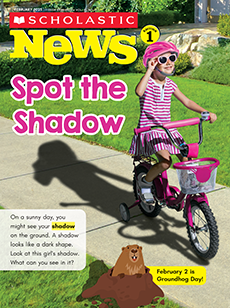A guide for using our resources
Children will identify the physical traits and behaviors of leaf-cutter ants.
Vocabulary: mandibles, vibrate, hitchhiker ants, fungus
Science Focus: insects, animal traits and behavior
CCSS (and states that have similar standards): RI.1.1 ask and answer questions; RI.1.4 determine meaning of words; RI.1.10 read informational texts; RF.1.2 vowels; W.1.8 gather information; SL.1.1 participate in collaborative conversations
Simple, spectacular ideas to boost your lessons.
Paired Text Suggestions: Hey, Little Ant by Phillip and Hannah Hoose
Paired Text Suggestions: Hey, Little Ant by Phillip and Hannah Hoose
- This book follows the conversation between a tiny ant and a child about to step on it. Students will enjoy the lyrical language and discussing the question posed at the end of the story!
Sequencing: Tiny Ants' Big Jobs
Sequencing: Tiny Ants' Big Jobs
- Have a class discussion about all the steps the leaf-cutter ants take to get their food. Ask students to think about what they read. Where are the leaf-cutter ants going at the beginning of the issue? Have students underline the sentence in the article that lets them know.
- Write down their ideas using and highlighting the term First (e.g., First, the ants walk up the tree trunk). What is the next thing the ants do?
- As the class discussion continues, emphasize sequencing words like then, after, next, and last.
- Have students continue to underline sentences that tell them what the ants are doing, or have them draw each step on a separate sheet of paper.
- Example of a list of steps:
o First, the ants climb up the tree trunk.
o Then, they cut leaves into small pieces.
o Next, they carry the leaves back to the nest.
o After, they put the leaves in the nest.
o Last, they eat fungus growing on the leaves.
Hands-on Activity: Insect Scavenger Hunt
Hands-on Activity: Insect Scavenger Hunt
Skills: observation, writing
Materials: Insect Scavenger Hunt skill sheets, clipboards, pencils, crayons, optional: books about insects
- Go on an insect scavenger hunt! Will students spot their favorite bugs?
- Give students clipboards with the Insect Scavenger Hunt skill sheet attached. Go on a scavenger hunt for insects outside.
o Alternative: Hunt for photos or illustrations of insects in books from your
classroom - Students can color each insect they spot.
- When the music stops, kids have to do whatever is written on their “lily pads!”
- After the hunt, have students circle their favorite insect. In the lines below, ask students to describe their favorite insect. Ask questions to help guide them: What color is it? Does it have wings?
